The windows of the Doyle Chapel are filled with bright,
joyous colors and give to the ambience a spirit that go with the writings and
the attitude of Bonaventure. The University chapel takes one further
within the expressed life of Saint Bonaventure than any other feature at the
University. His life and his writings
are depicted within the six stained glass windows, all of which were
manufactured in Paris.
| At the front-right side of the Chapel one finds the first
window and the beginning of Saint Bonaventure's life story. The book being
depicted in the window is Legenda Maior. When Bonaventure was young, he
was very sick and doctors could not help him, his mother prayed to the recently
canonized Saint Francis and Bonaventure's sickliness disappeared and his life
was saved. Within each of the Chapel's windows there are two separate
images which depict features within the teachings of Bonaventure, as well as the
Catholic faith. In this window there is a cross and an anchor, which
symbolize faith and hope, respectively. |
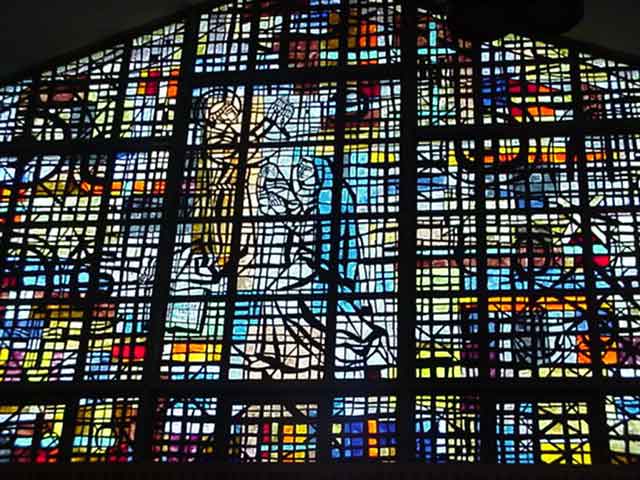
|
| In the second window on the right side, the
book is the Commentary on the Sentences of Peter Lombard. The scene
depicted is that of Saint Bonaventure teaching young friars of the Order at the
University of Paris. It shows that a very important aspect of Bonaventure's
life was, of course, teaching. The flaming heart and lilies of the field
symbolize charity and poverty, respectively. |
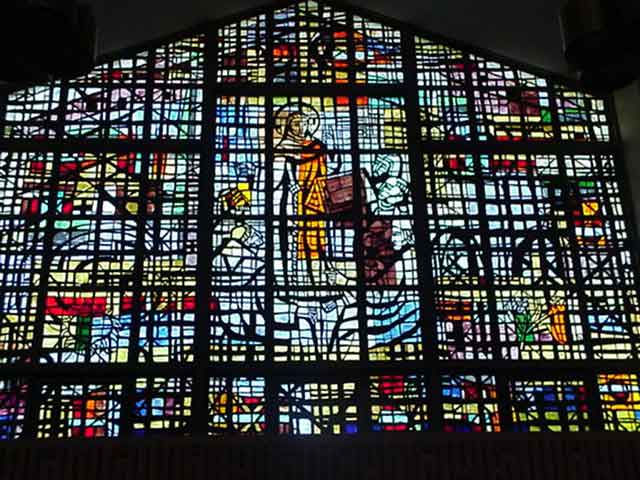
|
| The third window depicts an aspect of
Bonaventure's private life. Saint Thomas Aquinas, a Dominican, has come to speak
with Saint Bonaventure. Thomas carries a large book, his Summa Theologica.
Bonaventure, while standing before a lectern, reveals the secret of his wisdom
to Thomas and points towards a crucifix. On the lectern there is a small, but
pious writing, very expressive of Franciscan mystical interest in the life and
passion of the Lord, the Lignum Vitae. The symbols in the window are of a
cincture and Lamb, which represent chastity and obedience. |
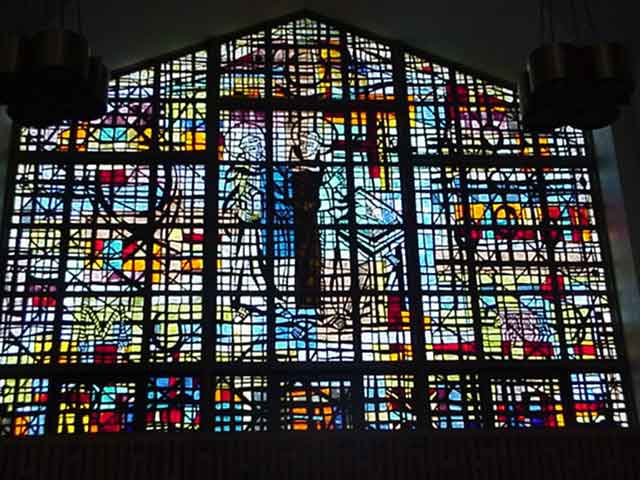
|
|
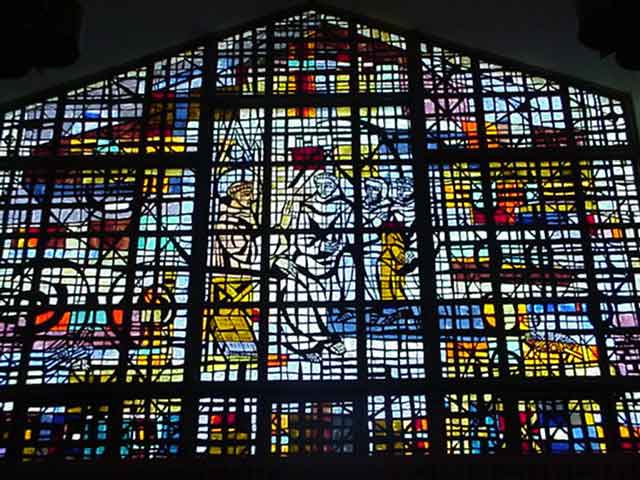
|
On the rear-left side of the Chapel, the
story continues. Saint Bonaventure is now the Minister General of the Order and
presides at the Chapter of Narbonne. At the chapter he is displaying another
important writing, the Constitution of Narbonne- the first complete
writing of law in the Order. The symbols in this stained-glass section are a
dove and manger, representing simplicity and humility. |
|
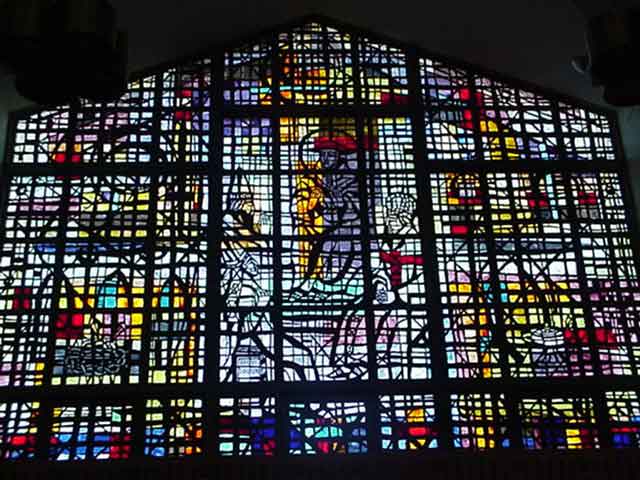
|
In the fifth window, there is the
Breviloquium of Bonaventure. This was one of his earlier writings. The scene
is that of Bonaventure, now a Cardinal of the Church, and no longer Minister
General of the Order. He is presiding at the request of Pope Gregory X at the
Council of Lyons. He is seating with Greek Church officials and he is discussing
the unification of the eastern and western Churches. The crown of thorns and
nails symbolize penance, and a lamp represents knowledge. |
|
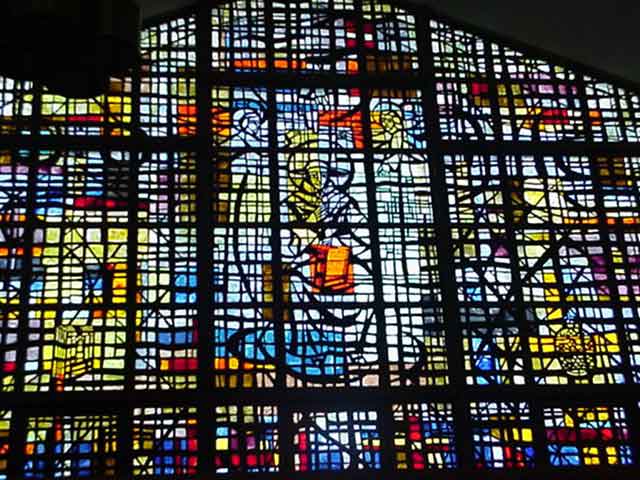
|
In the final window, Bonaventure is now dead,
but he sits enthroned in heaven. The celestial scene shows Bonaventure being
received by the heavenly court as Saint and Doctor. The book in Bonaventure's
hand is the Mystery of the Blessed Trinity. The book was written in his
theological years, but it is now fitting to have it in hand at this point of his
career. A sealed book and papal tiara symbolize science and wisdom,
respectively.
|
 
|